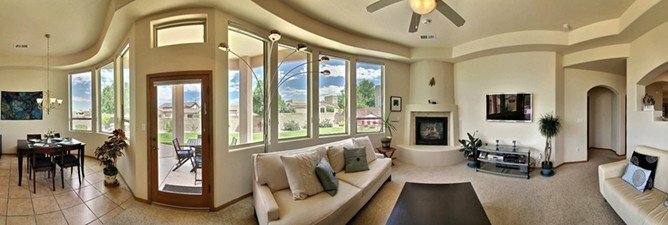Virtual property tours were on the rise even before the start of the pandemic. But since the beginning of lockdowns, they have become the new norm.
People are now happy to commit to a property without an in-person tour.
Recent statistics show that 70% of renters make their decision based on a remote viewing alone. 82% of owners advertising with a 3D walkthrough successfully rent out their property on an entirely virtual basis. And 90% of home-hunters pay more attention to a listing that includes a virtual tour.

For property owners and real estate agents, the question is how to best adjust to this new normal. How to create the perfect virtual tour?
Here are five tips to ideally showcase your property through remote viewings and digital walkthroughs.
First off, you have to decide what sort of virtual tour you want to create. Will a video walkthrough be enough? Or do you want to create a 3D experience that viewers can navigate themselves?
Once you’ve made your choice, look for the right platforms to create your virtual tour. It pays off to check out different software options, their technical requirements, and pricing.
High-resolution photo and video equipment are a must. Low-quality, grainy footage won’t earn you points with potential renters or buyers.
Before you start filming, you need to prepare the property thoroughly.
High-quality photography will pick up everything, and 3D tours will show angles that don’t usually appear in pictures. This means you really can’t cut corners when it comes to cleaning the place or making repairs.
Hand bigger repairs, replacements, or remodels over to a trustworthy general contractor. Declutter furnished properties, repaint walls in neutral colors, renew finishes, and replace broken or visually unappealing elements. A good tour also includes outside views, so consider curb appeal.
Make sure that the place is finished and spotless before you start filming for the virtual tour.
Pro-tip: Have a home inspection done by a neutral professional. The certificate from such an inspection boosts home-hunters’ trust in your listing and increases your chances of renting or selling.
You want your prospects to visualize your property as their home. In person, they can wander through the rooms of an empty house, mentally place furniture, repaint walls, and get a feel for the place that they will make theirs.
Online, this is much harder - which is where staging comes in.
Staging means personalizing empty property by adding furniture, or neutralizing existing personal touches.
If the apartment or house you’re aiming to rent or sell is currently inhabited, make sure to remove personal items. Take down family pictures, hide individual touches like throw pillows, and put away trinkets such as toys.
You can liven up empty property with virtual staging. This means editing in furniture after recording the tour. Be absolutely up-front with your viewers about this, though.
Lighting is crucial to provide a seamless viewing experience on both video and in 3D tours.
Uneven lighting between rooms can be disorienting. Bad lighting also lowers image quality, which could make viewers suspect you’re trying to hide something.
For great lighting, pick the right time for filming the tour. Aim for plenty of natural light and adjust your equipment’s light sensitivity and shutter speed accordingly.
In addition, switch on all the lights and add spotlights in darker areas. You might even want to consider professional lighting.
Once you’re filming, don’t move furniture, doors, or curtains. This can alter light conditions and create discontinuities.
Also, be wary of mirrors and other reflective surfaces. No cameras or people should be visible in the finished video or 3D product. Post-edit them out if necessary - otherwise your tour risks looking amateurish.
For a 3D tour, you’ll have to pick the right kind of navigation to showcase your property.
Most people will be familiar with the “Google street-view style”, where viewers click from point to point. On the downside, they won’t be able to jump between rooms, so consider adding a 2D floor plan to use as a menu.
You can use hotspots to showcase particular points or features. By integrating videos or photo galleries, you can highlight new kitchen equipment, a recently remodeled bathroom, or a stunning balcony view.
In 2020, renters and buyers want virtual property tours. The more professional, in-depth, and immersive the tour, the higher your chances of selling or renting your property.
That means it pays off to invest time and effort into creating a perfect virtual tour.
Choosing the right kind of tour, working with professional software and equipment, preparing and staging your property, paying attention to lighting and continuity, adding intuitive navigation, and showcasing hotspots will help you achieve just that. So that you can show your property in its best light.